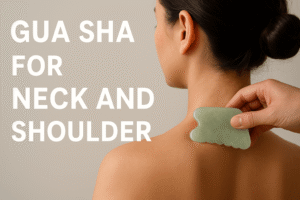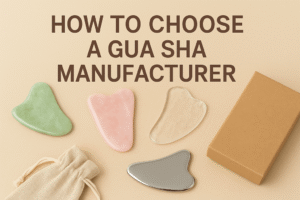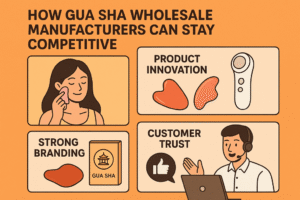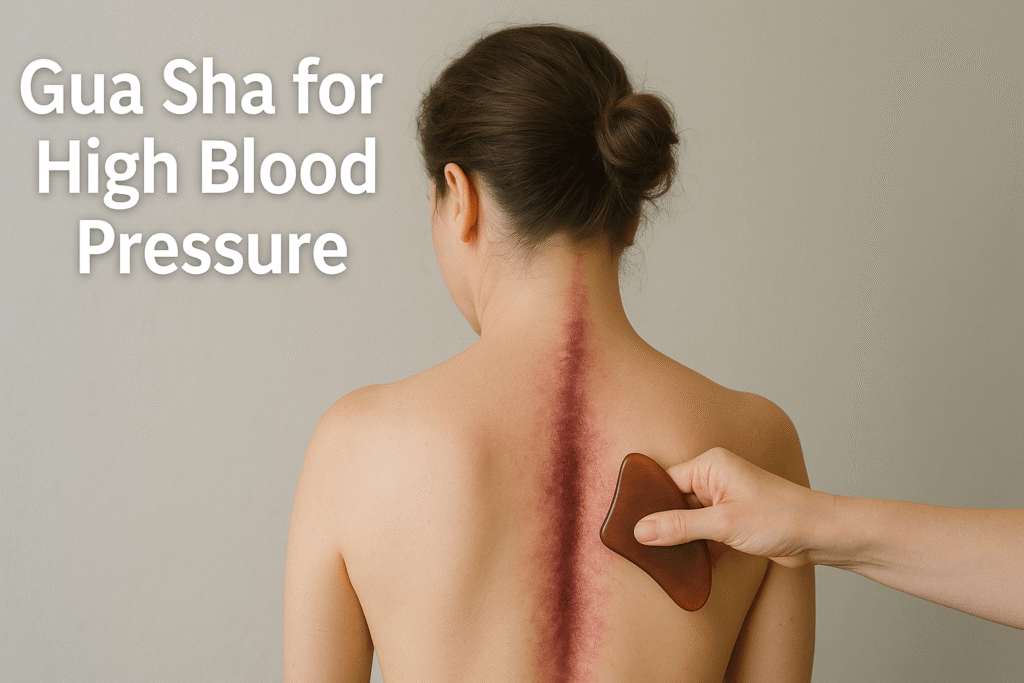
In recent months, I’ve frequently received information about “Gua Sha for High Blood Pressure” from people around me and online. Some sought to learn whether Gua Sha is effective, while others shared their experiences. This sparked my curiosity.
In modern society, hypertension has become a common chronic condition affecting global health. According to the World Health Organization, due to improved living conditions and growing social pressures, over 1.1 billion people worldwide suffer from high blood pressure, and this number continues to rise. Given this significant number, in addition to standard medications, people are seeking non-drug, natural therapies to improve their condition and minimize medication side effects. So, can Gua Sha really lower high blood pressure? Today, we’ll address this question.
The Formation Mechanism of Hypertension and The Perspective of Traditional Chinese Medicine
Traditional Chinese and Western medicine have slightly different explanations for the development of hypertension. Considering that Gua Sha is part of traditional Chinese medicine, we will focus on the TCM explanation.
TCM believes that hypertension is often associated with the following pathological mechanisms:
- Hyperactivity of Liver Yang: Excessive liver fire causes upward surges of Qi and blood.
- Phlegm-dampness obstruction: Improper diet leads to phlegm-dampness blocking the meridians
- Qi stagnation and blood stasis: Chronic emotional depression leads to poor Qi and blood circulation
Reviewing the therapeutic principles of Gua Sha clearly demonstrates its succumbing to these pathological conditions. Therefore, in principle, Gua Sha has considerable potential for treating hypertension. However, the existence of a theory does not guarantee its effectiveness. We have collected clinical research and case studies to understand its practical effects.
The Potential Effects of Gua Sha for High Blood Pressure: Science and Case Studies
- A systematic review and meta-analysis published in the Journal of Integrative Medicine included nine randomized controlled trials involving 765 patients with stage I and II hypertension. The results showed that compared with antihypertensive medication alone, scraping combined with antihypertensive medication resulted in:[1]
- A mean reduction in systolic blood pressure of approximately 5.09 mmHg (95% CI: -6.50 to -3.67, P < 0.001)
- A mean reduction in diastolic blood pressure of approximately 2.66 mmHg (95% CI: -3.17 to -2.14, P < 0.001).
The conclusions indicate that scraping is more effective in improving sleep quality in elderly patients and can be used as an adjunctive treatment for stage I–II hypertension. It is important to note that this data refers to scraping combined with medication and does not reflect the effects of scraping alone. Gua Sha may be more suitable as an adjunctive therapy rather than a primary treatment for hypertension.
- Another meta-report compiled by the Hunan Journal of Traditional Chinese Medicine included 11 studies covering 869 patients with hypertension. The combined results showed:[2]
- An average decrease of 8.99 mmHg in immediate systolic blood pressure (95% CI: -12.71 to -5.28)
- A decrease of 15.09 mmHg in 1–2 months
- A decrease of 8.07 mmHg in 3–4 months
- A decrease of approximately 6.54 mmHg in 24-hour average systolic blood pressure
- An average decrease of approximately 7.52 mmHg during the day and 5.83 mmHg during the night
- A downward trend in diastolic blood pressure was also observed (immediately -3.76 mmHg, -6.34 mmHg in 1–2 months, and -3.69 mmHg in 3–4 months).
The study further indicated that scraping therapy, when combined with other Traditional Chinese Medicine (TCM) methods, can significantly improve clinical symptoms and quality of life in patients with hypertension.
- A study on integrated Traditional Chinese and Western medicine nursing, published in 2023, randomly divided 60 patients with hypertension and ischemic stroke into a control group (conventional treatment alone) and an observation group (supplemented with scraping therapy) for four weeks. Results:[3]
The observation group showed significant reductions in blood pressure (systolic and diastolic), blood lipids (TC, TG, LDL-C), homocysteine (Hcy), and MMP-9 levels, surpassing the control group (P < 0.05).
This study demonstrates that meridian scraping therapy, based on the theory of “One Qi Circulation,” can be a safe and effective adjunctive treatment for hypertension and stroke.
In addition to various research theories, practical case studies are also crucial in demonstrating the potential effects of scraping therapy on hypertension. Numerous TCM clinics and health centers have reported that middle-aged and elderly patients, or those working under prolonged stress, reported relief from head swelling and relaxation after receiving neck and back scraping therapy. Blood pressure measurements also showed a slight decrease.
How to Use Gua Sha for High Blood Pressure
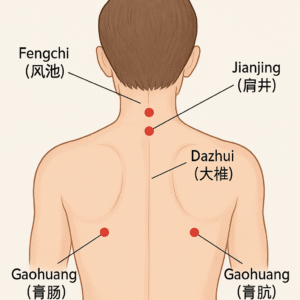
Through research and case studies, we’ve found that Gua Sha is indeed effective in treating hypertension, but it requires tailoring the treatment to the specific condition. To maximize its hypotensive properties, the selected areas and methods should be tailored to the specific condition:
Recommended Gua Sha Areas:
- Neck: Fengchi and Dazhui points – relieve nervous tension, reduce internal heat, and calm the mind
- Shoulders and back: Jianjing and Gaohuang points – relieve stress, activate meridians, and remove blood stasis
- Midline of back: Xinshu and Ganshu points – regulate mood and relieve liver fire
Gua Sha Treatment Recommendations:
- 1-2 times per week, 15-20 minutes each session; avoid frequent daily use.
- Choose a scraper made of natural materials (such as Bian stone, ox horn, jade, etc.).
- Use gua sha oil or lubricant to avoid dry scraping.
Performing gua sha at night is most effective, helping with sleep and stabilizing blood pressure. Remember not to use gua sha blindly. While it doesn’t have the toxic side effects of medication, excessive use can cause harm.
Who is Not Suitable to Lower Blood Pressure Through Gua Sha?
While Gua Sha is generally considered safe, it’s not 100% effective. As mentioned above, excessive use can have negative side effects. Furthermore, some people are not suitable for using Gua Sha to lower blood pressure, even if they use the correct technique:
- Those with extremely high blood pressure or acute hypertensive crisis (e.g., ≥180/120 mmHg)
- Those with severe cardiovascular disease (e.g., previous stroke, myocardial infarction)
- Those with coagulation disorders who are prone to excessive bleeding or severe bruising
- Those with skin diseases or infections
- Pregnant women and the elderly and infirm require special attention to strength and location during the procedure.
In addition, if you experience dizziness, fatigue, or persistent skin rash after using Gua Sha, you should immediately stop using the technique and rest until the symptoms subside before continuing.
For those with hypertension who are suitable for Gua Sha, Gua Sha has shown significant positive feedback in improving their daily lives and serving as an auxiliary treatment. This requires proper mastery of the technique.
However, we do not recommend blindly using Gua Sha as a primary treatment for hypertension. It is more appropriate to consider it as an auxiliary treatment modality. We strongly recommend consulting a professional physician before considering Gua Sha, this will ensure optimal results and minimize potential risks.


